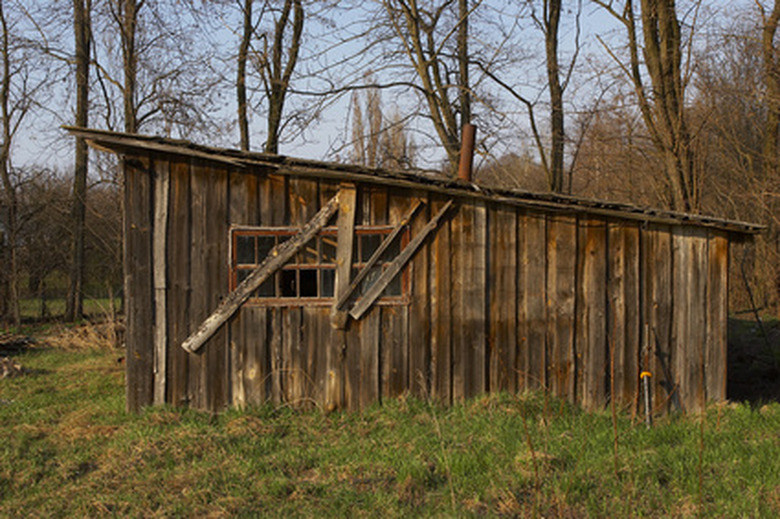Importance Of Weathering
Weathering is a natural process that occurs when dried lumber is placed on the side of a building or any other location and left exposed to the elements. During this process important chemical and physical changes occur that are called weathering.
Weathering Is Not Decay
Weathering Is Not Decay
Weathering should not be confused with decay, which occurs when the surface of the wood becomes the host for the growth of fungi or moss. Decay usually follows an unusually high moisture content within the wood.
Sunlight Is Key Factor
Sunlight Is Key Factor
Sunlight is the key factor that facilitates the change in the surface of the wood. Wind can play a factor, as can heat, cold, moisture and abrasion by wind-blown particles. But the sun's rays are the main reason that wood goes through the weathering process.
Chemical Changes In Wood
Chemical Changes In Wood
Sunlight in the ultraviolet (UV) spectrum has the biggest effect on the surface of exposed wood. It only takes a few sunny days for the sun to begin the photochemical reaction that affects the outside layer of the wood. The energy from the UV spectrum is strong enough to chemically break down and alter the structure of the wood. This explains why it is important to paint wood siding as soon as it is installed, if the wood is to be painted.
Weathered Boards Can Last
Weathered Boards Can Last
Once begun, weathering of wood does not continue at a continuous rate. The chemical changes that occur in the wood act as a natural preservative that can protect the wood for a very long period of time. Grain structure may prevent this from occurring in all types of wood, but a tight-grained wood can last a long time on the outside of a building.
Chemical Treatment of Wood Can Block The Process
Chemical Treatment of Wood Can Block The Process
According to R. Sam Williams of the Forest Products Lab in Madison, Wisconsin, clear chemical preservatives, such as chromic acid, can retard the weathering process and essentially prevent the wood from undergoing the chemical changes caused by UV radiation. Exactly how this happens is not clearly understood, but the author surmises that the acid inhibits the photochemical reaction caused by the sun.
References
Cite This Article
MLA
Bauholz, Henri. "Importance Of Weathering" sciencing.com, https://www.sciencing.com/importance-weathering-6181538/. 24 April 2017.
APA
Bauholz, Henri. (2017, April 24). Importance Of Weathering. sciencing.com. Retrieved from https://www.sciencing.com/importance-weathering-6181538/
Chicago
Bauholz, Henri. Importance Of Weathering last modified March 24, 2022. https://www.sciencing.com/importance-weathering-6181538/
